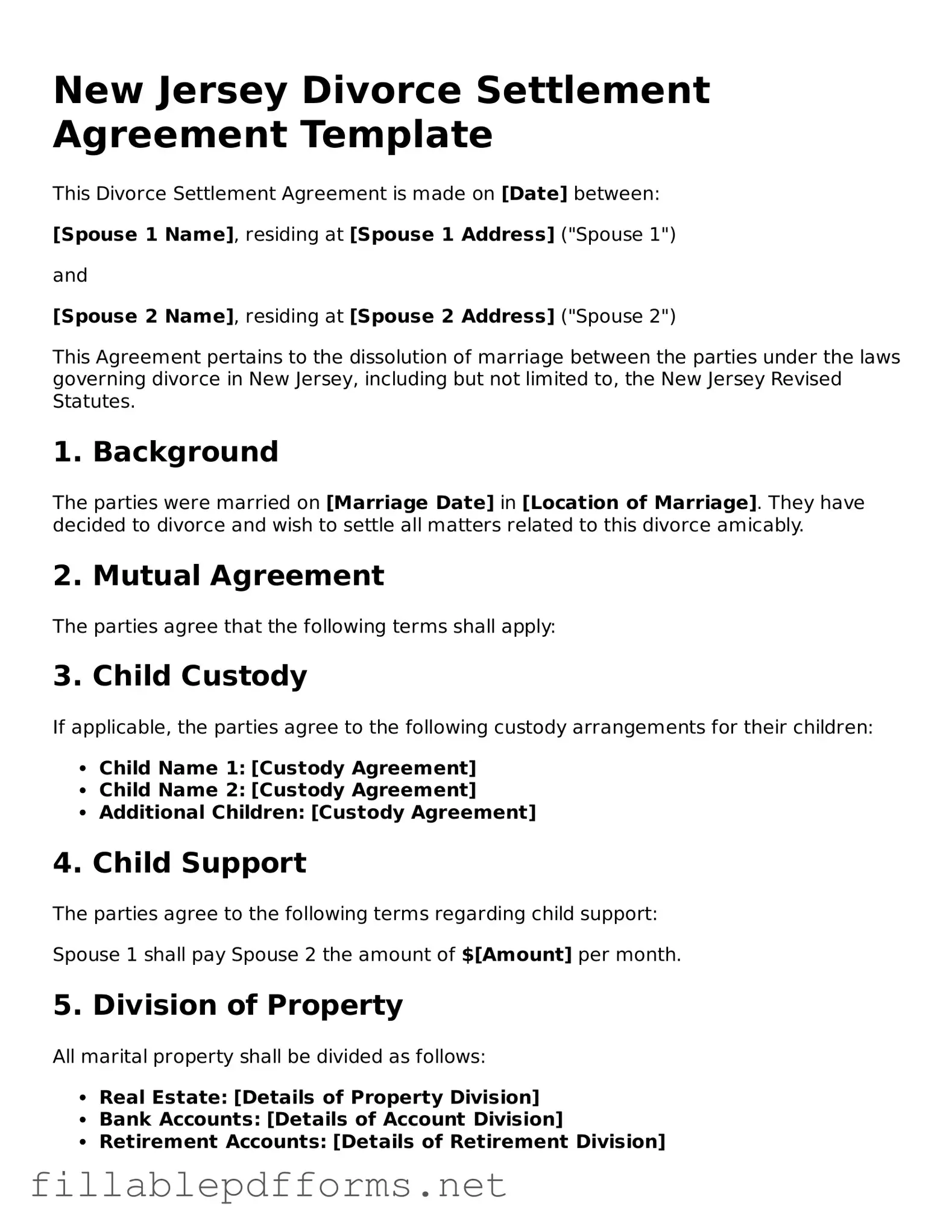Attorney-Verified Divorce Settlement Agreement Form for New Jersey State
The New Jersey Divorce Settlement Agreement form is a legal document that outlines the terms agreed upon by both parties during a divorce. This form addresses key issues such as asset division, child custody, and support obligations. Completing this agreement is crucial for ensuring a smooth and fair resolution to the divorce process.
Launch Editor Here
